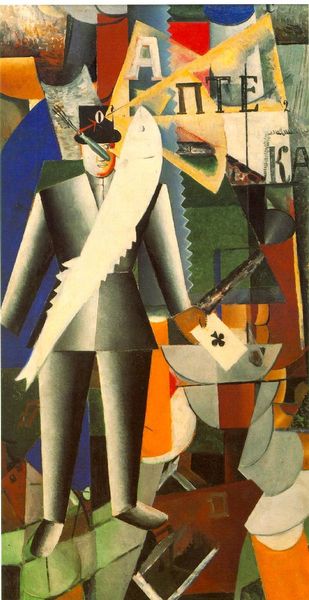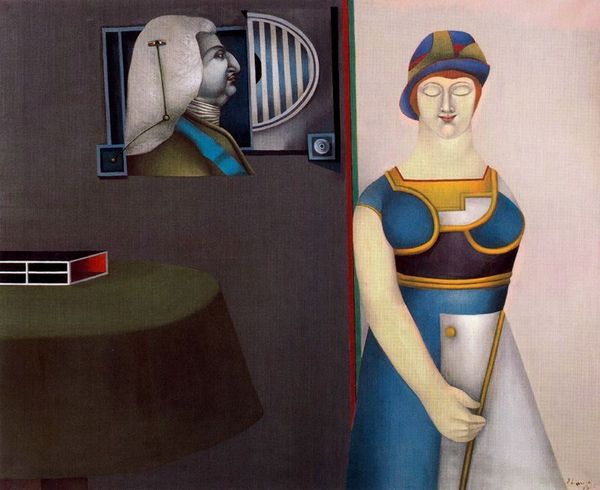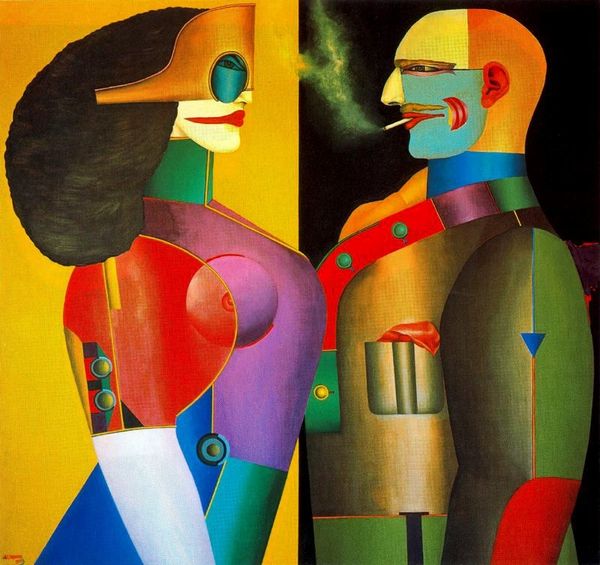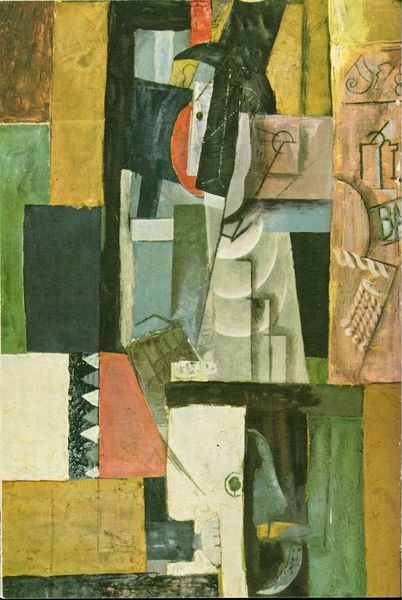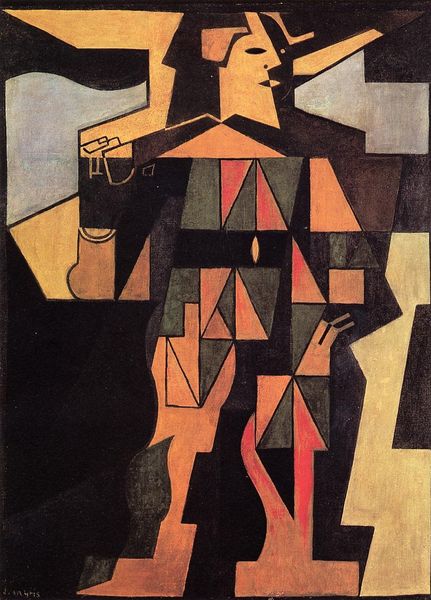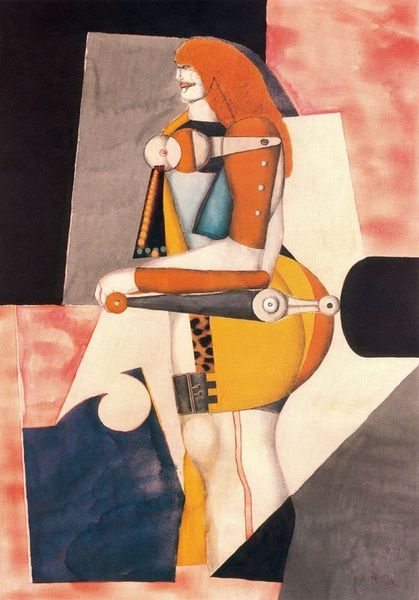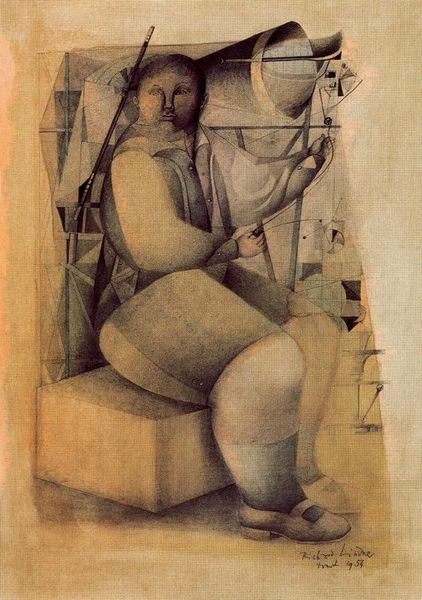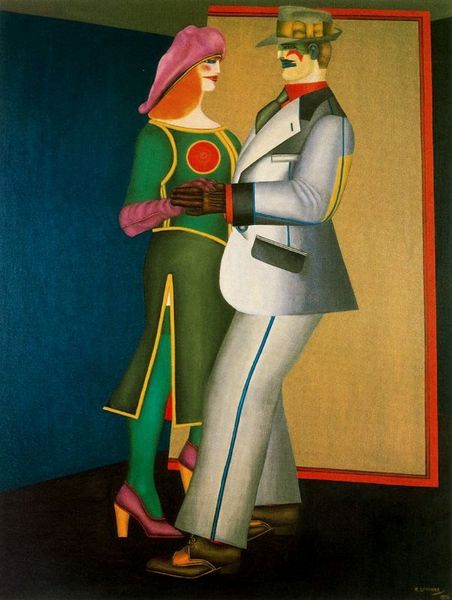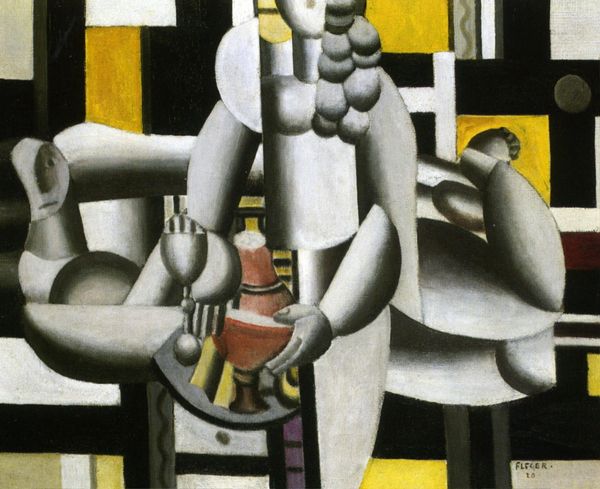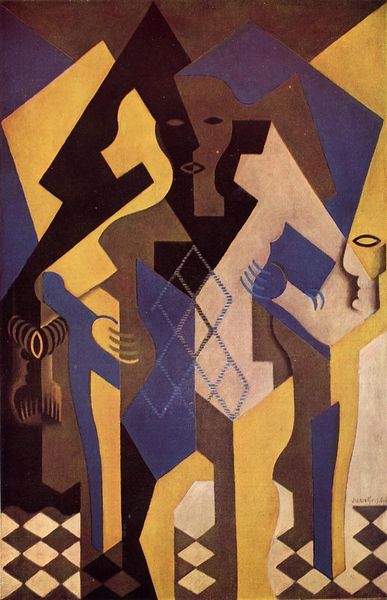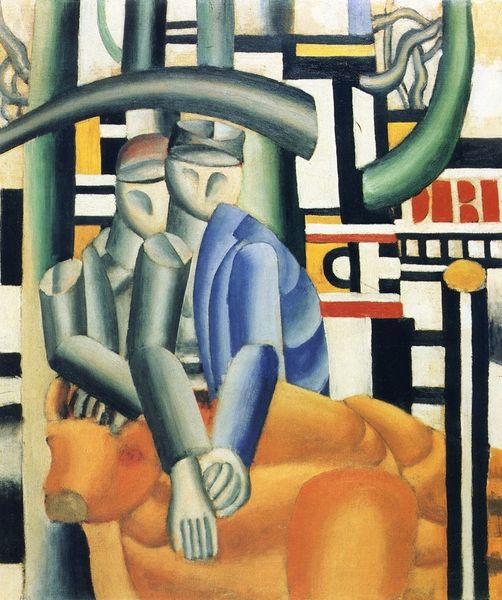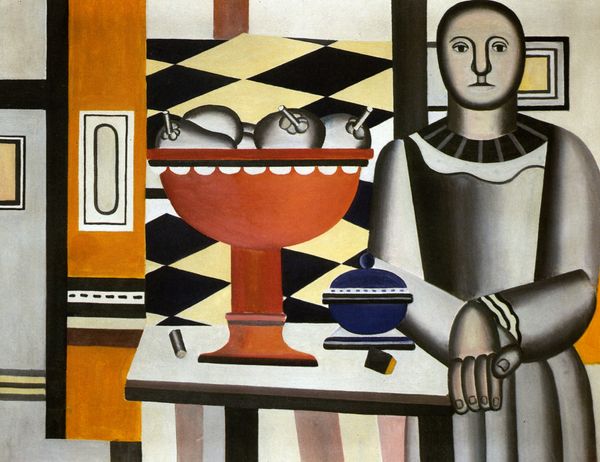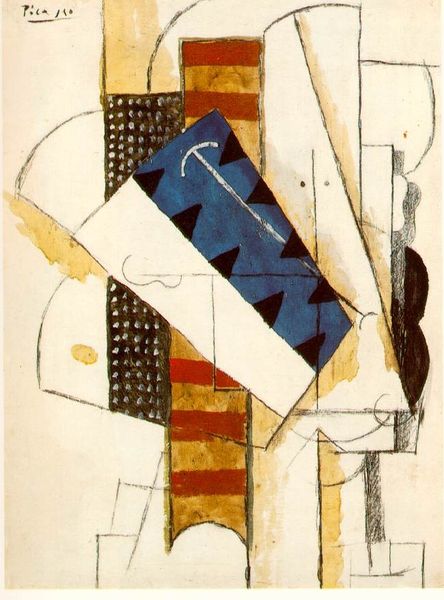
Copyright: Public domain US
Curator: Carlo Carrà's 1917 painting, "Madre e figlio," executed in oil paint, offers a striking example of Metaphysical art. Editor: The figures have a rather still, stage-like presence that sends my mind into thinking of childhood memories; it brings about a bittersweet nostalgia, doesn’t it? Curator: Indeed. Carrà employs geometric forms and enigmatic figuration, placing two mannequins in an ambiguous spatial context. Notice the stark contrast between the smooth, classical features of the 'son' and the fragmented, almost mechanical construction of the 'mother.' This juxtaposition is quite deliberate. Editor: Right! The mother figure definitely looks like a puzzle, cobbled together. What gets me, though, is the utter lack of emotion—it’s both unsettling and incredibly powerful, even somewhat funny. It feels like a very dark inside joke. Curator: It’s consistent with the modernist impulse to challenge conventional representation, leaning instead toward abstraction and symbolism. Note how the clinical linearity of the ruler juxtaposes the warm tonalities, creating tension in the overall composition. We must remember Carrà's exploration of futurism. Editor: The color palette is certainly muted but intense, a mix of umber and ivory and burnt sienna, which seems intentional for conveying the heavy stillness. Curator: Such muted tones serve to further distance the scene from reality, thus creating this metaphysical landscape. The objects within are precisely arranged, demanding interpretive attention. Editor: Exactly. Art should give us questions, not always the answers. Curator: And it's pieces like this which encourage such discourse through a mastery of composition and color theory. Editor: Agreed. "Madre e figlio," after careful reflection, resonates on so many layers with subtle power; I wonder if that was Carrà’s ultimate aim!
Comments
No comments
Be the first to comment and join the conversation on the ultimate creative platform.
